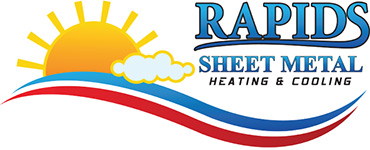
You shouldn’t need to compromise on comfort or drain your wallet to keep your house at a pleasant setting during hot days.
But what is the best temperature, exactly? We discuss ideas from energy pros so you can select the best temperature for your home.
Here’s what we advise for the most energy-efficient setting for air conditioning in Wisconsin Rapids.
Recommended Thermostat Settings for Summer
Most families find using the thermostat at 72-73 degrees is ideal. However, if there’s a big difference between your indoor and outdoor temperatures, your cooling expenses will be larger.
These are our suggestions based on the U.S. Department of Energy (DOE) and ENERGY STAR®.
While at home: 78 degrees. While that appears hot, there are methods you can keep your home refreshing without having the AC running frequently.
Keeping windows and blinds down during the day keeps cool air where it should be—inside. Some window treatments, like honeycomb shades or plantation shutters, are designed to offer more insulation and better energy savings.
If you have ceiling fans in your residence, the DOE says you can move thermostat settings about 4 degrees hotter without sacrificing comfort. That’s because they refresh through a windchill effect. Since they cool people, not rooms, turn them off when you leave a room.
If 78 degrees still appears too hot at first glance, try doing a test for about a week. Get started by raising your temperature to 78 degrees while you’re home. Then, progressively lower it while adhering to the suggestions above. You may be amazed at how comfortable you feel at a higher temperature setting.
While away: 88 degrees. There’s no rationale for keeping the air conditioner going all day while your residence is empty. Turning the temp 7–10 degrees warmer can save you anywhere from 5–15% on your air conditioning expenses, according to the DOE.
When you arrive home, don’t be tempted to set your thermostat colder than 78 to cool your home more rapidly. This isn’t productive and usually leads to a more expensive AC expense.
A programmable thermostat is a useful approach to keep your temperature under control, but you have to set programs. If you don’t use programs, you run the risk of forgetting to change the set temperature when you go.
If you need a handy resolution, think about installing a smart thermostat. This thermostat links with your phone, so it is aware when you’re at home and when you’re gone. Then it intuitively modifies temperature settings for the best savings. How much exactly? An estimated $180 yearly on heating and cooling, according to ENERGY STAR.
Another benefit of getting a smart thermostat? You can use your phone to watch and adjust temperature settings from just about anywhere.
While sleeping: Around 70 degrees. While ENERGY STAR suggests 82 degrees, that might be unbearable for most families. The majority of people sleep better when their bedroom is chilled, so that’s why the National Sleep Foundation advises 60–67 degrees. But that may be too cold, based on your clothing and blanket preference.
We suggest trying an equivalent test over a week, moving your temperature higher and progressively lowering it to choose the best setting for your family. On cool nights, you could discover keeping windows open at night and using a ceiling fan is a superior solution than using the AC.
More Ways to Save Energy This Summer
There are added approaches you can save money on cooling bills throughout the summer.
- Buy an energy-efficient cooling system. Central air conditioners only are effective for about 12–15 years and get less efficient as they age. An upgraded air conditioner can keep your house comfier while keeping AC expenses low.
- Schedule regular air conditioner tune-ups. Regular air conditioner maintenance keeps your system operating properly and may help it operate more efficiently. It might also help prolong its life expectancy, since it enables technicians to find little troubles before they create a major meltdown.
- Switch air filters regularly. Follow manufacturer instructions for switching your air filter. A dirty filter can result in your system short cycling, or turn on and off too often, and increase your utility.
- Measure attic insulation levels. Nearly 90% of houses in the U.S. don’t have proper insulation, according to the Insulation Institute. Most southern climates require 13–14” of attic insulation, while northern climates need 16–18”.
- Have your ductwork checked. Ductwork that has loosened over time can leak cold air into your attic, walls or crawl space. This can create huge comfort problems in your house, like hot and cold spots.
- Seal openings, doors and windows. Keep hot air where it belongs by closing openings. You can also caulk or weather strip doors to keep more conditioned air inside.
Save More Energy This Summer with Rapids Sheet Metal Works Inc
If you want to conserve more energy during hot weather, our Rapids Sheet Metal Works Inc professionals can assist you. Give us a call at 715-301-0256 or contact us online for more details about our energy-saving cooling solutions.
